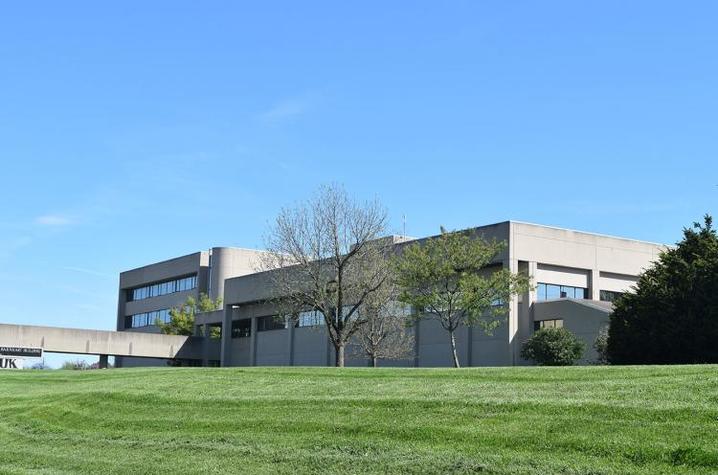Grant From NTRA Charities to Establish New UK Equine Surfaces and Safety Laboratory

LEXINGTON, Ky. (April 19, 2019) — A gift of $100,000 announced recently by the National Thoroughbred Racing Association Charities will enable the University of Kentucky to further support equine surfaces and safety research under the direction of Mick Peterson, director of UK Ag Equine Programs.
Funds will be used to renovate existing space within the College of Agriculture, Food and Environment to create the NTRA Charities Equine Surfaces and Safety Laboratory. The investment will allow UK to make a meaningful impact on the sport of horse racing through surface and safety research conducted by Peterson, a nationally known expert in surface safety and faculty member in the UK Department of Biosystems and Agricultural Engineering.
“NTRA Charities is excited to support UK’s new Equine Surfaces and Safety Research Laboratory, which through its important work will absolutely lead to a safer racing environment for our human and equine athletes,” said NTRA President and CEO Alex Waldrop. “This presents a unique opportunity to achieve significant advancements in the science of creating and maintaining safer racetrack surfaces. This lab will also help us train the next generation of track maintenance personnel to analyze the wealth of data that will soon be available to keep racing surfaces as safe as possible.”
In 2016, UK acted upon the recognized need to expand its research capabilities in the area of safety and recruited Peterson as a faculty member and director of UK Ag Equine Programs. Peterson joined the team, relocating the Racing Surfaces Testing Laboratory (RSTL) to Kentucky, and he continues to improve the safety of horse and rider in horse racing and sport horse endeavors.
“NTRA has reviewed variations on this proposal for nearly two years and we are very pleased to see it go forward. The job does not end here. We anticipate continued calls on the industry to fund specific surfaces research projects undertaken in this new laboratory,” said Steve Koch, executive director, NTRA Safety and Integrity Alliance.
“The UK College of Agriculture, Food and Environment is committed to our signature equine industry in all ways. In particular, we are dedicated to all aspects of safety in our sport,” Dean Nancy Cox said. “This gift allows us to do important research to assist thoroughbred racing and to create a pipeline of experts to serve racetrack safety.”
Under the direction of Peterson, RSTL has been particularly effective at reinforcing the welfare and safety commitment through its central testing laboratory for dirt, turf and synthetic racing surface materials. To date, testing has included more than 70 different racing and training tracks around the world. Equipment development from the lab includes riding crop design assessment, testing maintenance equipment and performance tests of starting gate and rail padding. The RSTL materials laboratory inspired efforts by the Fédération Équestre Internationale (FEI) that have now expanded activities to arena surfaces testing, including large scale sample analysis that is available only in Sweden.
“This laboratory will allow us to do racetrack surfaces testing on a larger scale to permit us to replicate surface properties using maintenance equipment on the surfaces, which have been observed on racetracks but are not well understood. Understanding racetrack maintenance is key to providing a consistent racing surface regardless of the weather,” Peterson said.
The laboratory will work to solve today’s problems associated with surface and safety research. Projects that are currently funded but have previously been space constrained include:
- The development of real-time moisture sensors for racing surfaces.
- Shoeing effects on swing phase joint loading.
- Real-time sensing of gait parameters.
- Subsurface design of racetracks.
- The effect of harrowing on the formation of the racetrack hardpan.
- New tools for the measurement of cushion depth on dirt racetracks and moisture and penetration resistance on turf tracks.
The laboratory has the potential to offer substantial new areas for industry development, including:
- The effect of a harrowed racing surface on optimal helmet design.
- The potential for new horseshoe designs to reduce loading rate for arteriosclerosis risk reduction.
- The development of new sensors for fan engagement and handicapping data using "internet of things" technologies.
Additionally, the expanded laboratory would provide space for undergraduate and graduate students to learn from and participate in innovative research and for important entities within the industry, such as track superintendents, to advance their knowledge and skills in a hands‐on setting.
Renovation is expected to begin by summer with space beginning to be used for research within a few months.




